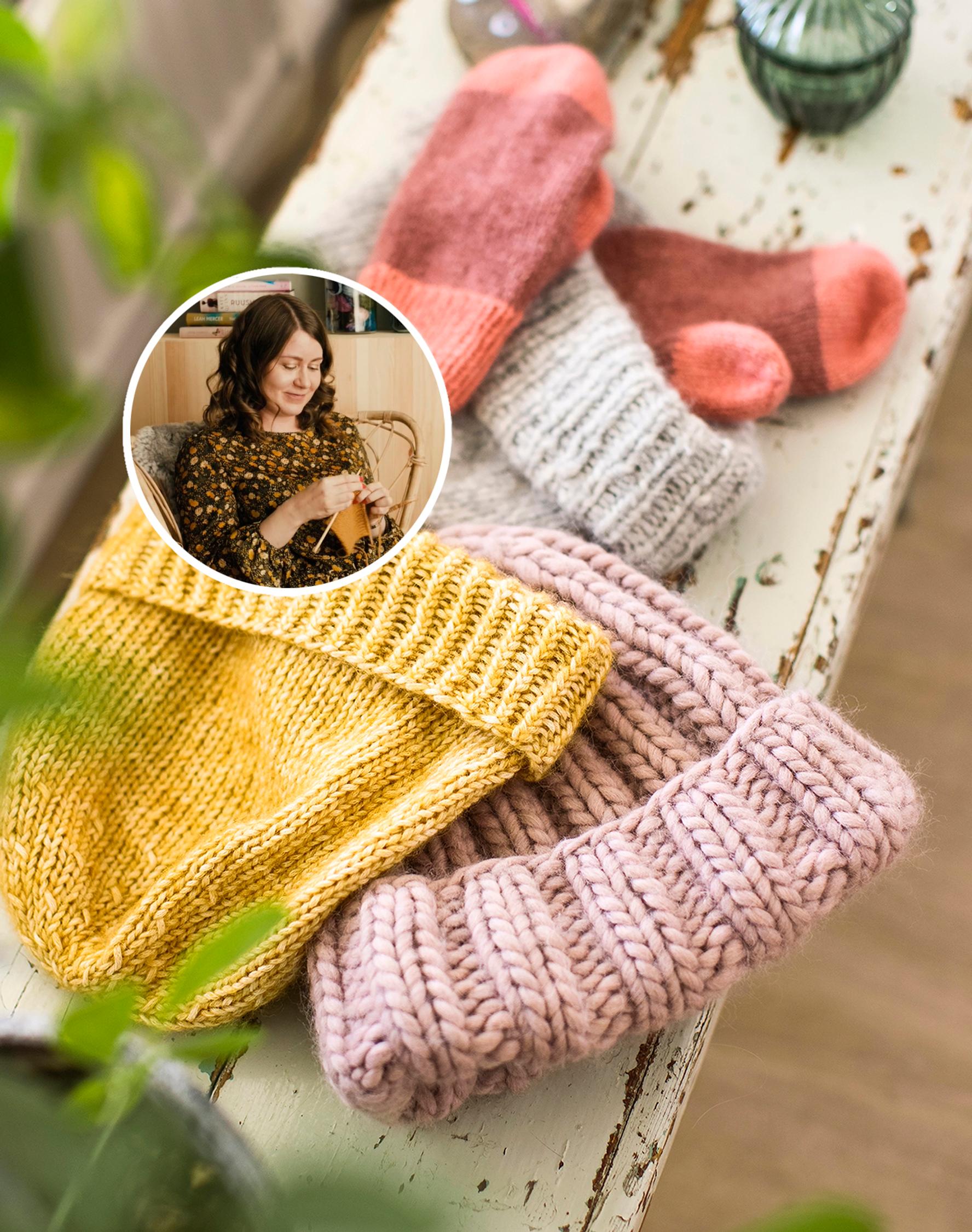
“Knitting is just a hobby, and yet so much more”: how handicrafts helped Annette Saksman process her emotions
Socks that twist around her feet, a cowl scarf reminiscent of a neck brace, and countless moments of unraveling. Even though her love for knitting began early, for a long time, it felt like nothing but disappointment. Over time, however, knitting became a vital tool for Kotona’s DIY producer, Annette Saksman, to process her emotions.
In the beginning, there was my mother’s pale lilac fuzzy sweater. As a child, I sometimes borrowed it, and I couldn’t imagine anything lovelier. Wrapped in that oversized sweater, I felt softness and security all around me. That was the first time I realized how meaningful a knit garment could be. That memory has stayed with me to this day, and I’ve spent my entire life dreaming of having one just like it.
I learned to knit the same way many Finns did—in elementary school craft classes. I hated the clinking of metal needles, but the yarn itself drew me in right away. The fact that you can create an entire garment, stitch by stitch, with your own hands felt incredible back then—and it still does.
My first projects were awful messes, but whose weren’t? As a teenager, I envisioned a striking striped sweater and jumped right in, without a pattern of course. The finished piece was so tight at the top that the seams started to tear. I secured them with safety pins and kept wearing the sweater. I was proud of my creation, even if it was far from perfect.
Then came my youth, and I put knitting aside for years. High school, growing up, studying, falling in love, and moving in with someone else. Still, I knew I’d pick up the needles again one day, when the time was right. And eventually, that’s exactly what happened.
The following years were a period of trial and error, when I unraveled at least as much as I knitted. The socks I made were so loose they twisted around my feet. My tension was uneven, and the seams on my knits formed hard lumps. Toward the end of the 2000s, I got excited about the popular cowl scarves and decided to make one for myself. It turned out uniquely, to say the least. The loop I knitted with thick needles came all the way down to my knees, and when wrapped around my neck, it looked like a giant neck brace.
These failed projects made me laugh and cry in equal measure. The constant unraveling drove me up the wall. I lost count of how many times I thought, “I’ll never become a good knitter.” Still, I never gave up.
I persisted because knitting had become a key way for me to work through my emotions. I’ve knitted through deep sadness, loss, and significant life changes—through my happiest times and my weakest moments. The yarn and needles offered a safe harbor, a space in which to heal.
Finished knits are like little time capsules, each one tied to a specific moment or stage of life. I made my favorite socks on an unforgettable trip to Japan, and I knitted my dearest sweater while recovering from heartbreak. There was a time when I kept hearing baby news from every direction. As I knitted for friends’ children, I worked through my own sadness about not having a child.
Knitting is “just” a hobby, but at the same time, it’s so much more. For me, it’s almost like meditation—a way to let thoughts flow in and out. Even on the toughest day, knowing I can knit in the evening makes things better. Knitting offers a gentle escape where I can breathe.
Over the years, the finished product—or end result—has taken on less importance, though of course it still matters. For more complex pieces like sweaters, I follow a pattern. With my slightly impatient nature, I only read the beginning of the instructions beforehand. I tackle problems as they appear—and they always do. That’s when my experience and growing know-how come into play. Every challenging project also teaches me something new.
When I look at my endless yarn stash, I imagine knits that aren’t yet real. I’ll make a colorful sweater from leftover mohair, I have a powdery beige yarn waiting for just the right pattern, and the purple skein I once hauled back from Australia will become a plush beanie—someday. These visions might take years to materialize—or never happen at all. But they quietly nurture my faith in the future, even if events in my own life or out in the world suggest gloom.
And one day, I’ll finally knit that pale lilac fuzzy sweater, just like the one from my childhood memories.


